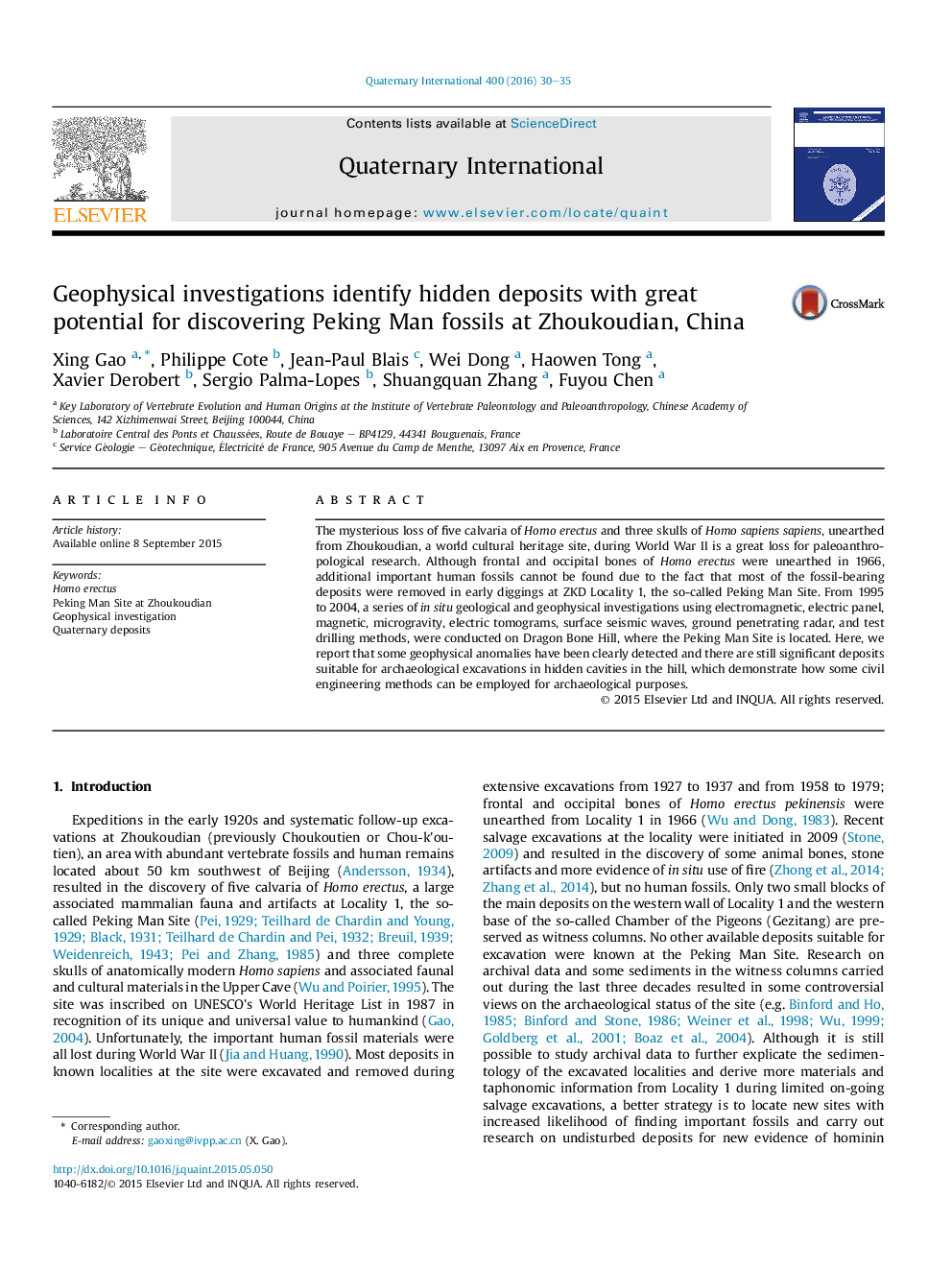| Article ID | Journal | Published Year | Pages | File Type |
|---|---|---|---|---|
| 1040211 | Quaternary International | 2016 | 6 Pages |
The mysterious loss of five calvaria of Homo erectus and three skulls of Homo sapiens sapiens, unearthed from Zhoukoudian, a world cultural heritage site, during World War II is a great loss for paleoanthropological research. Although frontal and occipital bones of Homo erectus were unearthed in 1966, additional important human fossils cannot be found due to the fact that most of the fossil-bearing deposits were removed in early diggings at ZKD Locality 1, the so-called Peking Man Site. From 1995 to 2004, a series of in situ geological and geophysical investigations using electromagnetic, electric panel, magnetic, microgravity, electric tomograms, surface seismic waves, ground penetrating radar, and test drilling methods, were conducted on Dragon Bone Hill, where the Peking Man Site is located. Here, we report that some geophysical anomalies have been clearly detected and there are still significant deposits suitable for archaeological excavations in hidden cavities in the hill, which demonstrate how some civil engineering methods can be employed for archaeological purposes.
